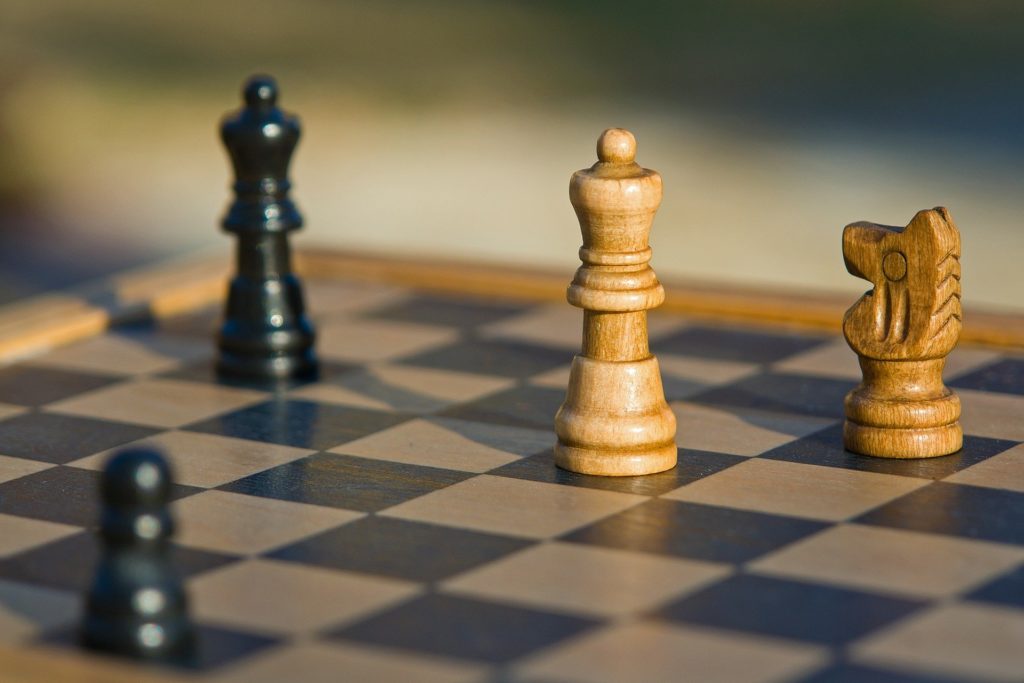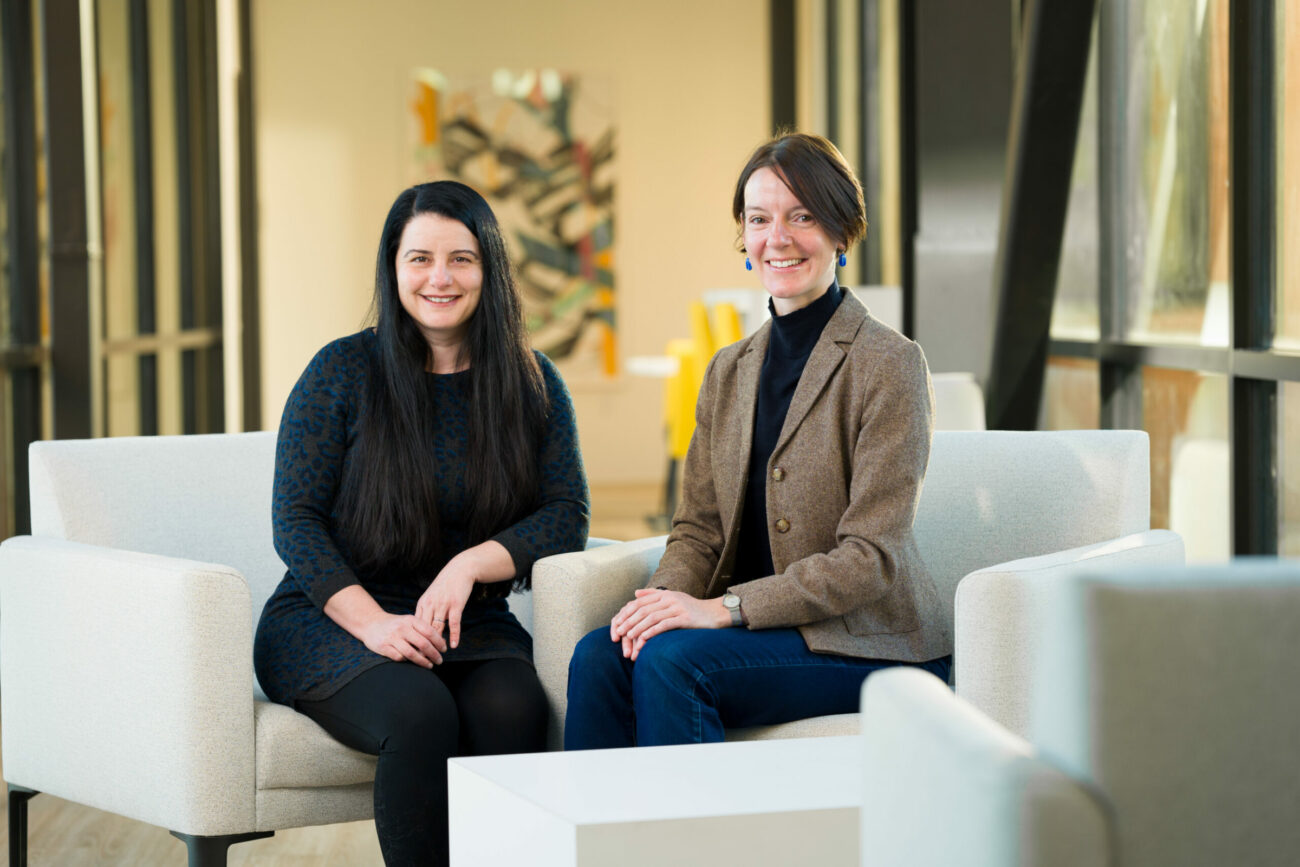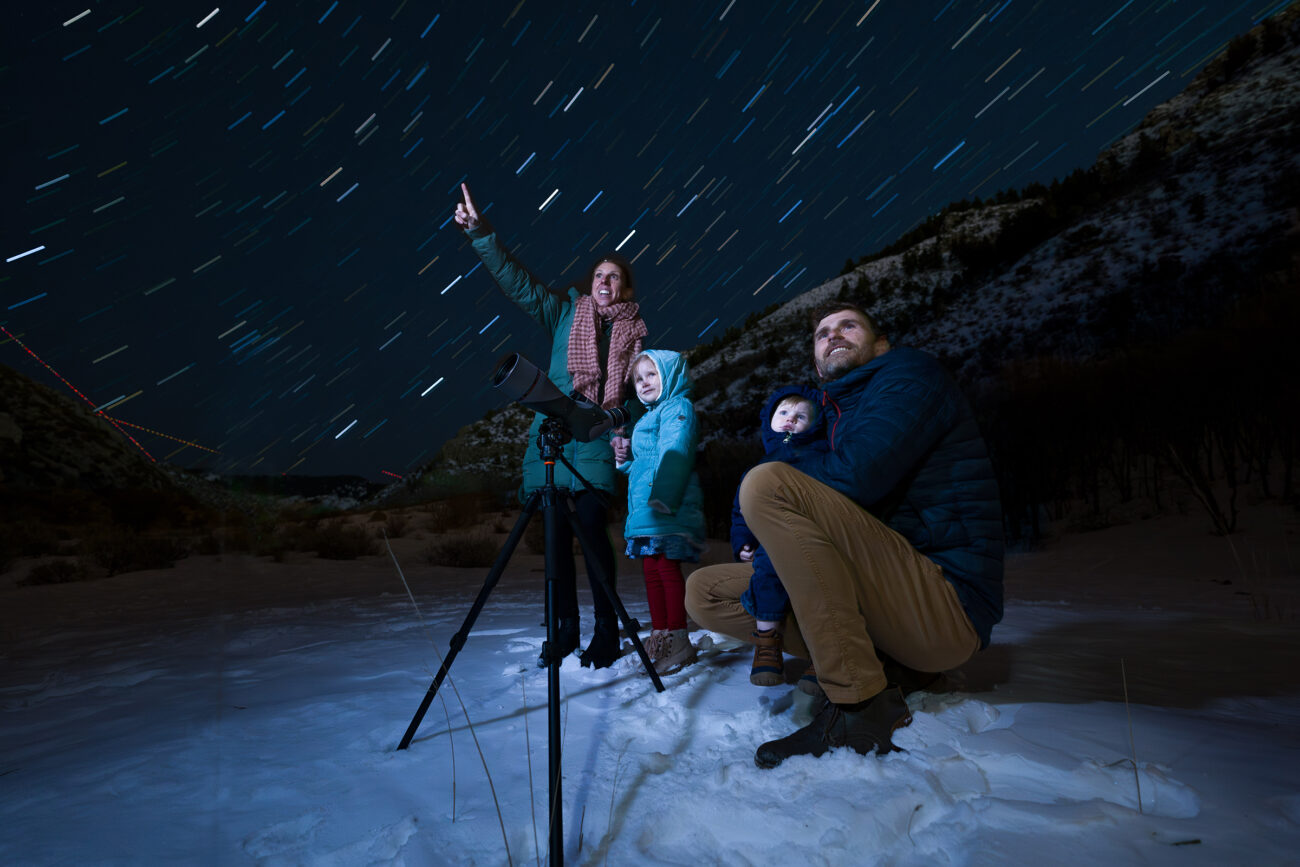The Way We See Things

Perception matters.
It affects how we interact with the world and what we view as threats. It can turn a seemingly benign puddle of water into an alarming threat to your toddler, or the impeachment of a president as an act of treason. Five Utah State University scholars reflect on how perception influences human behavior in their own studies relating to personal wellness.
While Jennifer Peeples was living in Vietnam, her perception of the invisible world of toxins began to change. So did her perspective.
In 2004, Peeples, associate professor of communication studies, was in Vietnam with her husband who was on a Fulbright Scholarship. About the same time, a group of Vietnamese citizens was suing some 30 chemical companies claiming irreparable health problems caused by Agent Orange, including birth defects suffered by a half million children and a variety of cancers and neurological problems inflicted on another two million.
“The things that I can’t see are the things that are most dangerous for us and for him.” – Jennifer Peeples
Despite the decades that had passed since the end of the Vietnam War, “you still could not live there at that time and not be extraordinarily conscious of toxins, and on top of that, our son was two years old,” Peeples recalls. Dioxin, the toxin found in Agent Orange, is colorless and residual. While not orange in color, Agent Orange leaves an oily sheen on vegetation. Eventually it is absorbed into the soil. Dioxin is what remains—and has remained—across much of Vietnam and caused so much damage, which is why her toddler’s interest in rain puddles all at once elevated a new awareness in her. She began recognizing “that the things that I can’t see are the things that are most dangerous for us and for him.”
This heightened awareness of hidden toxins prompted her to begin collecting everything she could on the topic across several academic disciplines. When she returned home, she continued her research and eventually published, “Imaging Toxins” in Environmental Communication: A Journal of Nature and Culture. More recently, she chronicled the evolution of symbols used to convey invisible toxins and the dangers they pose at the 44th annual Honors Program Last Lecture under the title, “Picture Your Poison.”

Droughts are predicted to become more common in areas already affected by them. Photo by Pixabay.
Her take away: if you perceive that, as a human race, we have a handle on the 84,000 registered chemicals, of which the U.S. Environmental Protection Agency has banned only nine, you would be wrong. If you perceive that the labels, images, and language used to describe toxins and their dangers are adequately recognized and understood across the globe, you would also be mistaken.
“The more universal these labels become, the more applicable they are to a variety of different types of toxins, but they also lose that second step which is to say, how you are supposed to interact with that toxin,” she says. “So they draw attention, but they’re not as good at necessarily providing warning or instruction on what you are supposed to do.”
PERCEIVING RISK
The way in which we communicate warnings about severe weather poses its own set of challenges, says Peter Howe, associate professor of human-environment geography. It is called a “near-miss affect” when forecasts or projections fail to materialize, or are not as severe as first predicted.
“We see this during hurricanes when people are told to evacuate an area that’s going to be in the path, and then the hurricane veers away and doesn’t follow the forecasted track,” he says. “In the future, those same people may be less likely to evacuate.”
Over the past decade, Howe has tracked American perception of global warming and extreme weather risks. He recently completed a National Science Foundation grant looking into how people perceive risks from heatwaves around the country. While hurricanes and tornadoes garner more attention, heat waves actually kill more people in the United States, he says. Part of the reason is that, like the world of toxins, they are practically invisible. They also tend to affect the most vulnerable in society.
People at the most risk are often the ones who can least afford to take the necessary precautions. – Peter Howe
Howe and colleagues developed a model that estimated health-risk perceptions of heat waves for every state, county, and populated census tract in the United States based on individual and socio-environmental predictors of heat risk perceptions. They looked at factors related to whether people perceived the risk to be greater for themselves and their families, and then mapped those perceptions to identify the hot spots where perceived risks were very high or low relative to their actual risk.
Some of their findings: People perceive risks very, very differently, even those living in the same city or urban area, partly depending on their socioeconomic status, race, ethnicity, etc. People at the most risk are often the ones who can least afford to take the necessary precautions, he says.
In contrast, they also found that older people tend not to see themselves as being more at risk. “One explanation could be that people in those age groups don’t see themselves as elderly and, therefore, more susceptible.”

Image by Andrew Martin courtesy of Pixabay.
Those who can change their perception of the dangers extreme heat poses are likely to take a more cautious or pro-active approach, including policy makers, he says. “There’s a lot of things, when it comes to heat that local decision makers can do to help reduce its impact. In urban heat islands where pavement holds heat longer, promote white, more reflecting roofs, plant more trees, create more urban parks, Howe says. Even addressing emergency management procedures, such as building networks of cooling centers where people can go if they don’t have air conditioning, or if their AC goes down. Cities like Phoenix are way ahead of the curve on this because they experience hundreds of deaths every year from heat, but it’s something that most cities around the country are going to need to deal with as the globe continues to heat up, he says.
SHIFTING PERSPECTIVES
Worrying is something most Americans do very well. Consider it another hidden toxin. A 2018 Gallup poll found that 45 percent of U.S. residents said they felt worried a lot, more than in any year since 2006.Jennifer Krafft, a USU graduate student pursuing a Ph.D. in clinical and counseling psychology, is focusing on worry as part of USU’s ACT Research Group. The lab’s purpose is to find innovative ways to treat mental health issues. Their research focuses on Acceptance and Commitment Therapy and self-guided approaches to dealing with problems.
“Worry is a normal human thing that our minds just do,” Krafft says. “Our minds were built to worry. If we can shift our perspective on worrying and not treat it as a problem or an obstacle, but something that can be there while we’re doing what matters to us, I think that’s a helpful shift.”
“Our minds were built to worry. If we can shift our perspective on worrying and not treat it as a problem or an obstacle, but something that can be there while we’re doing what matters to us, I think that’s a helpful shift.” – Jennifer Krafft
Worry makes people’s lives shrink and get smaller. The way in which it creates tunnel vision and obsession on worst-case scenarios—failing classes, not having enough money, letting down family and friends. “Kind of just focusing on that and finding that your freedom to do things gets a lot smaller—your world sort of shrinks into that,” she says. “So I think it’s really cool as someone who works in anxiety to look at, like, ‘how do we make your world big again?’”
The self-guided help uses a mobile app they developed in which users assess how anxious and worried they are feeling and rate how much they feel stuck in their worries or disconnected from what is important to them. The app also provides skill-building exercises to help users work through the most severe problems identified. The innovative aspect is the way in which the program combines self-help with group-help. It benefits participants by allowing them to interact in a group setting and practice their newly honed skills. In the process, participants see they are not alone in their struggles—that plenty of others are dealing with similar problems, Krafft says.

Image from Pixabay.
The data shows that the program seems to be moving the needle. “It’s pretty cool to see that we got a shift over just six weeks among people who often feel like they’ve been worrying for most of the time for as long as they can remember.”
REDUCING ECHO CHAMBERS
For all of the benefits of technology, such as the development of apps that can help people lead healthier lives, there are plenty of drawbacks, as well. While the connecting power of the internet has expanded the world, it has also isolated it, particularly in the social media realm, says Rachel Robison-Greene, a postdoc in philosophy. Her research interests are in meta ethics, ethics, and epistemology.
The day following the impeachment of President Donald Trump, an analysis piece in the Washington Post posited that the decline of traditional news outlets and the ascendancy of social media are channeling Americans “into information silos.” The result is that it makes “it far easier for them to view impeachment as either the witch hunt Trump claims it is or the righteous reaction to a rogue president that many Democrats perceive.”
In other words, perceptions formed in information silos have the ability to skew and distort facts, stripping all reason and civility from arguments in a toxic, Agent Orange, fashion.
“When you engage in emotional rhetoric, that’s not likely to convince people who are not already inclined to agree with you.” – Rachel Robison-Greene
“We can get information at just the click of a button on whatever platform we want to get information on,” Robison-Greene says. “Social media in particular is a challenge because it creates ideological bubbles and then the nature of the language that’s being used by our friends and the groups that we follow help to structure our belief system and I think contribute to tribalism.”
It also leads to sloppy thinking.
“It encourages a host of critical thinking errors,” Robison-Greene says. “So instead of evaluating arguments on their merits, we are motivated by likes and loves, and those kinds of things … and not what the best arguments support.”
To help make the world of social media a more productive, less hurtful, platform—one that broadens instead of diminishes perspective—Robison-Greene has five recommendations. First, teach critical thinking skills to students at a young age. “Being able to evaluate statistics and understand how to look at research methodology … is a skill that people aren’t learning, and so it’s easy for misinformation to spread on the internet.”
Second, celebrate social media for the free speech tool that it is, a place where all voices can be heard, where people are given a chance to respond to well-reasoned arguments that point to conclusions worth accepting based on the most evidence—a thoroughly John Stuart Mill approach.

Philosophy professor Harriso Kleiner rejects the idea that individuals who hold different religious beliefs are ripe to experience conflict. Image by Devanath from Pixabay
Third, instead of using broad, sweeping rhetoric in trying to persuade, use it more narrowly where you’re looking at argumentation and what’s likely to convince based on reason. “When you engage in emotional rhetoric, that’s not likely to convince people who are not already inclined to agree with you. It’s argumentation that’s going to do that by providing premises for conclusion, and providing reasons that are compelling.
Fourth, if you find another person’s position on something to be reprehensible, start with compassion. Try to understand how they may have come to their beliefs, understanding that it was likely not out of maliciousness. “If the goal is to convince them, ultimately, to come around to the other side, you’re probably not going to do that if you don’t understand how they got to be in the place where they are.”
And finally, pick your battles. “We should try to be temperate when it comes to social media,” she says. “We should practice moderation when it comes to what we engage in. Otherwise, I think we’ll just turn ourselves into cesspools of rage, if we try to engage every single person with whom we disagree.”
LEAVENING VIEWPOINTS
She speaks of logos, one of Aristotle’s three modes for persuasion—appealing to logic and persuading through reason, fact, and figures. Digging deeper into this is Harrison Kleiner, USU associate vice provost and assistant professor in philosophy.
Logos can be translated in a number of ways, he says. It is the origin of dialogue, but it can also simply mean intelligibility.
“Human beings have a capacity for logos that gets exercised through argument he says. “And by argument, I don’t mean yelling. It’s you having a different view than me, and you give reasons and I marshal reasons and we raise objections and respond to them and we try to come to a shared understanding.”
That is the best-case scenario when two perspectives intersect. It is also where potential conflict is most likely to happen. Kleiner, who teaches a number of courses focusing on religion, has paid close academic attention to this subject because human conflict throughout history has often been tied to religiosity. “What I reject, I suppose, is this idea that when there are differing perspectives, and those perspectives are religiously informed, then it’s uniquely ripe for conflict,” he says. “Whether the perspective is religious or not, I think it’s fanaticism and fundamentalism that move potential conflicts into real conflicts.”
“We’re really failing our students if they don’t graduate from the university in a position to be citizens who can entertain a belief without holding it, without accepting it, because that is what moderates the impulse of the majority to tyrannize the minority.” – Harrison Kleiner
He blames this on the way society today tends to divorce faith from reason, to silo one off from another. “That is what leads to fanaticism and fundamentalism—of political varieties, of religious varieties, etc.,” he says.
So what change of perspective is needed to keep this from happening?
“Here’s maybe a good telling of a story for a university,” he says. “I think you need liberal education. You need to have the religious and political impulse, the cultural impulse, whatever these commitments that people have, be they religious or not, we need to have them be leavened by logos.”
The role of logos in education then is “to make sure that your viewpoint is always leavened by the recognition that a reasonable person could disagree,” he says. “That, to me, is a cool thing about the university … We’re really failing our students if they don’t graduate from the university in a position to be citizens who can entertain a belief without holding it, without accepting it, because that is what moderates the impulse of the majority to tyrannize the minority.”






